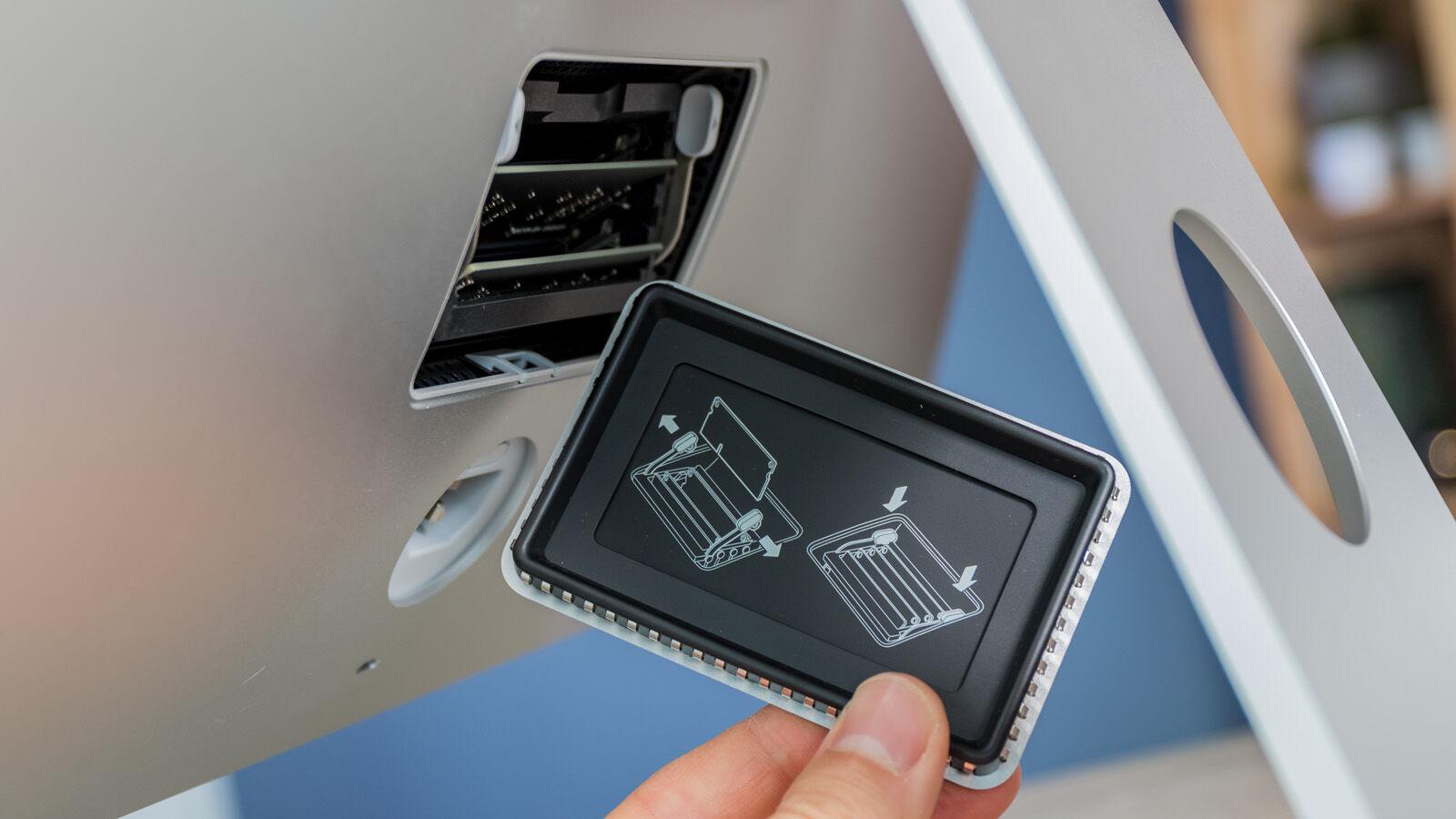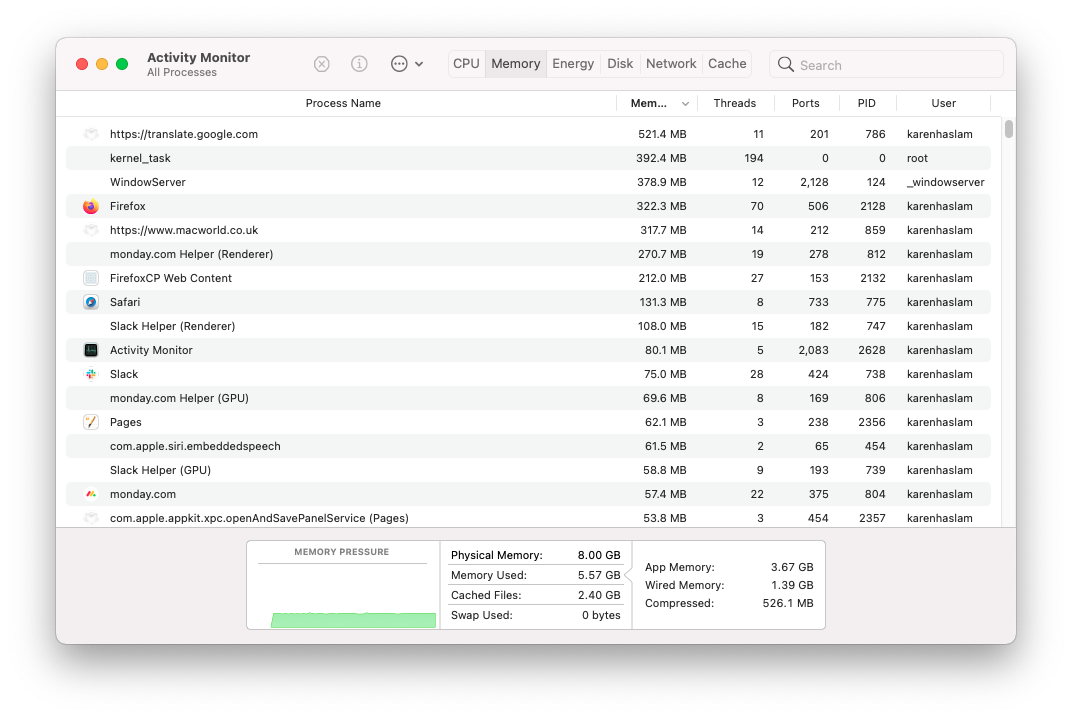
If your Mac's running slow its RAM (Unified Memory) might be maxed out. Here's how to free up memory and reduce RAM usage without restarting.


Is your Mac running painfully slowly? Has an application just hung? Did you see a “Your system has run out of application memory” message or the dreaded spinning beach ball? All of these can be signs that your memory (aka RAM or Unified Memory) is being used to the max. Read on to find out how to clear the RAM on your Mac and various helpful tips to help you clean or optimize your Mac memory, including what to do if your Mac RAM is always full.
First a quick primer. RAM stands for Random Access Memory and it provides storage for ongoing tasks and processes. The difference between the RAM and the rest of the storage on your Mac is that it’s faster, therefore your Mac is designed to keep certain things in RAM in order to speed things up.
Since the introduction of the M1 chip and subsequent Apple silicon in Macs, Apple has referred to RAM as Unified Memory. Unified Memory is shared between the CPU and GPU and can be diverted to where it is required.
Macs ship with a minimum of 8GB Unified Memory, but you can buy Macs with more. 8GB RAM should be plenty if you don’t run memory-hungry applications and games, but even the most average user can come up against RAM issues due to memory-hogging processes associated with badly designed web pages and apps. We have a separate article all about how to tell how much RAM is in your Mac if you aren’t sure how much you have available.
You need to ensure you get enough memory when you buy your Mac because the Unified Memory cannot be upgraded later on. We advise that you get the maximum amount of RAM you can afford when you buy a new Mac – you can do so as a build-to-order option at the point of purchase. You can opt for anything from 16GB RAM to 192GB in the Mac Pro. If your Mac doesn’t have enough memory for your needs you probably need to use a cleaner app, options for which we will discuss below.
Because it is mounted on the chip alongside the CPU and GPU, Apple’s Unified Memory is superior to standard RAM because it is accessible instantly. This should mean that 8GB RAM in a M1 Mac isn’t the same as 8GB RAM in an Intel Mac. In fact, Apple’s VP of worldwide product marketing, Bob Borchers, has claimed “8GB on an M3 MacBook Pro is probably analogous to 16GB on other systems. We just happen to be able to use it much more efficiently.”
However, in our experience, 8GB is still probably too low for most people. Even if you’re not using high-end apps, Safari and Photoshop can use several gigs of RAM. We advise that you get the maximum amount of RAM you can afford when you buy a new Mac. While 8GB Unified Memory should be sufficient for average use, you may find that it is worth investing in the 16GB or 18GB RAM options.
If your Mac is using the majority of the RAM available you may experience problems such as:
If these are issues you are encountering then you might be thinking that you need more RAM in your Mac.
If you have an old Mac and it is possible to upgrade the RAM this might be the solution you need, but we suspect that the RAM in the majority of our readers’ Macs can’t actually be updated. As we said above, if your Mac has an M-series processor there is no way to update the Unified Memory.
But, even if it is possible to add more RAM to your Mac there might be a much simpler solution, so we’d suggest that you try some of the tips below before rushing out and buying more RAM.
If it’s more RAM you want, and you can add more RAM to your Mac, then read How to upgrade the RAM in a Mac.

How can you address your Mac RAM problem if installing more RAM isn’t an option, or you want to attempt to fix the problem first?
One option is to use an app to clear your Mac’s RAM (or Unified Memory). We discuss a number of these options towards the end of this article. If you’d prefer to jump to that section click here: Best apps to clear Mac RAM.
However, before you install more RAM, or resort to downloading an app, there are several things you can do that might free up your RAM and fix your Mac’s memory problems.
Restarting your computer is the simplest way to free up RAM. There’s a reason why the IT desk always tells you to “turn it off and on again!” Most of the time that will solve your problem. (See: Should I shut down my Mac every night?)
When your Mac restarts it will empty the RAM and any disk cashes, so when it starts up again you should find that things run smoother.
However, restarting your Mac may not be convenient. Perhaps your system has hung and you are afraid of losing unsaved information, perhaps the idea of closing and reopening umpteen apps doesn’t appeal, or maybe you are in the middle of something that you don’t want to interrupt (even if that is the process that is stealing all the RAM).
If you don’t want to restart your Mac what can you do to free up RAM? Read on…
This also might not be something you want to do if your Mac is hung and you are in the middle of something, but it’s a good option to try because it’s possible that your problem is related to a known issue with macOS. This is why it’s always worth checking to see if you are running the most up-to-date version of macOS, and updating it if necessary. See: What is the latest version of macOS.
Apple frequently issues updates that include bug fixes and that might solve your problem.
Our first port of call when our Mac slows down or an app freezes is to check Activity Monitor. Activity Monitor is an app that comes with your Mac. You can find it in Utilities, or just start typing Activity Monitor into Spotlight (press Command + Space to bring up a Spotlight window).
Activity Monitor will show you how much memory is being used and will help you identify if a particular app is using up more than its fair share of resources.
You can see how your memory is being used in the Activity Monitor window. You’ll see details about each process and app, such as the amount of memory, how many threads, and so on. You can also see extra columns such as Energy Impact (handy if you are on battery power) by right-clicking on one of the column headers.
Select the Memory tab to see details about how much memory each process is taking up, a graph that shows Memory Pressure, and data about Physical Memory, Memory Used, Cached Files, and Swap Used. Next to that is a section for App Memory, Wired Memory, and Compressed.

As for what that all means:
That will all add up to the Memory Used figure.
The Cached Files figure represents the unassigned memory that is available to you. (If you are wondering what Swap Used is, it’s the memory being used by macOS, so it’s already accounted for in the Memory Used calculation).
In the Memory Pressure section, you will see a graph that gives an overview of how much pressure your system is under. Ideally, the graph will be green, but if you are short of memory it will be yellow, or worse, red. It is possible that the graph will be red even if it looks like you have lots of memory available, so it can be a good indication of problems.


Note: You shouldn’t close a process if you don’t know what it is as it may be required by your Mac.
If you glanced at Activity Monitor and noticed that certain apps appeared to be hogging resources even though you weren’t using them – maybe you didn’t even realize they were running, you may benefit from closing them down.
Even if you don’t look in Activity Monitor, a quick glance at your Dock could identify a few running apps that you could quit, thereby freeing up some resources. If you look at the Dock you’ll notice that some apps have a dot below their icon – these apps are open.